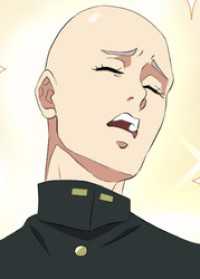- ホーム
- > 洋書
- > 英文書
- > Psychology
基本説明
Drawing on a rich variety of psychoanalytic, Jungian, and existential-phenomenological sources and on both Western and Asian spiritual texts.
Full Description
Presents an account of human development from a depth-psychological, transpersonal perspective.
Anyone seeking a deeper understanding of human spirituality will find something of value in Michael Washburn's new book. Drawing on a rich variety of psychoanalytic, Jungian, and existential-phenomenological sources and on both Western and Asian spiritual texts, Embodied Spirituality in a Sacred World provides a theoretical foundation for the idea that human development follows a spiral path. Washburn shows that ego development early in life requires us to turn our backs on original sources of our existence and, therefore, that spiritual development later in life requires us to spiral back to these sources on the way to whole-psyche integration. He elucidates the underlying causes and pivotal events that set development on its spiral course and traces six major dimensions of experience as they unfold along the spiral path: the unconscious, the energy system, the ego system, the perceived other, the experiential body, and the life-world. In providing a theoretical foundation for the idea of the spiral path, Washburn defends the idea against its critics and helps explain why the idea has been compelling to so many people in diverse traditions.
Contents
Preface
1. The Spiral Path: History and Criticism of the Idea
2. The Spiral Path: A Stage View
Neonatal Life
The Early Preoedipal Stage
The Late Preoedipal Stage
The Oedipal Stage
Latency
Puberty and Adolescence
Early Adulthood
Crossroads
Awakening
Regression in the Service of Transcendence
Regeneration in Spirit
Integration of the Ego and the Dynamic Ground
Concluding Observations
3. The Dynamic Ground
The Psychoid Unconscious
The Primordial Source of Life
The Intrapsychic Dimension of the Great Mother
The Splitting of the Dynamic Ground
Primal Repression and the Closing of the Dynamic Ground
The Id
The Mysterious Gravitational Attractor
The Numinous Core of the Psyche
The Psychic Underworld
The Source of Renewing Life
The Fertile-Sacred Void
Concluding Observations
4. Energy
The Primordial Reservoir
The Reservoir Opens
The Splitting of the Power of the Ground into Forces of Light and Darkness
Primal Repression and the Division of the Power of the Ground into Psychic Energy and Latent Libido
Psychic Energy as the Invisible Energy of Conscious Life
The Awakening of Libido During Puberty
Integrated Libido: The Second Latency of Early Adulthood
Ebb Tide: Introversion of Psychic Energy
The Awakening of the Power of the Ground as Numinous Spirit
Spiritual Awakening and Instinctual Derepression
From Numinous Spirit to Transforming Spirit
From Transforming Spirit to Transparent Spirit
5. The Ego
Ontological Considerations
The Incipient Ego
The Prepersonal Body Ego
Splitting and the Emergence of the Self-Representation
From a Split Body Ego to an Integrated Mental Ego
The Mental Ego During Latency
The Mental Ego During Adolescence
The Mental Ego During Early Adulthood
The Alienated Mental Ego
The Ego Awakens to the Numinous
The Ego Returns to the Dynamic Ground
The Ego Is Transformed by Spirit
The Integrated Ego
6. The Other
The Other as Wholly Immanent Other
The Other as Immanent-Transcendent Great Mother
The Other as Split Good-Terrible Mother
The Overcoming of Splitting and the Achievement of Object Constancy
Wholly Immanent Self and Wholly Transcendent Others
The Other as Object of Sexual Desire and as Transitional Ego Ideal Figure
The Other as Partner in Life's Tasks
The Other as Inauthentic Actor
The Other as Channel of Numinous Power
The Other as Angelic or Demonic Other
The Overcoming of Splitting and the Achievement of Higher Object Constancy
The Other as Sibling in Spirit
7. The Body
The Precosmic Universal Body
The Body of Polymorphous Sensuality
The Splitting of Pleasures into Good and Bad Pleasures
From the Body as Ego to the Body as Ego's Body
The Subdued Latency Body
The Sexually Awakening Body
The Sexually Mature Body
The Depersonalized Body
The Body on the Threshold of Spiritual Awakening
The "Resurrection" of the Body
The "Reincarnation" of the Ego
The Body as "Temple of Spirit"
8. The World
The Ouroboric Sphere
The Garden of Delight
The Splitting of the World into Enchanted and Haunted Worlds
The Natural World I: The Playground of Youth
The Natural World II: The Rehearsal Stage for Adult Life
The Natural World III: The Arena of Responsible Action
The Natural World Denaturalized: The Existential Desert
The Denaturalized World Supernaturalized: The Realm of Numinous Powers
The Supernatural Becomes Natural: The World of Transforming Spirit
Returning Home: The World of Transparent Spirit
Notes
Glossary
References
Index
-

- 電子書籍
- 喧嘩女子眼鏡大王【フルカラー】【タテヨ…
-

- 電子書籍
- 太子妃なんて絶対にイヤです!【タテヨミ…
-

- 電子書籍
- おっとり令嬢は騎士団長の溺愛包囲網に気…
-

- 電子書籍
- 奇譚蒐集家 小泉八雲 白衣の女 講談社…




